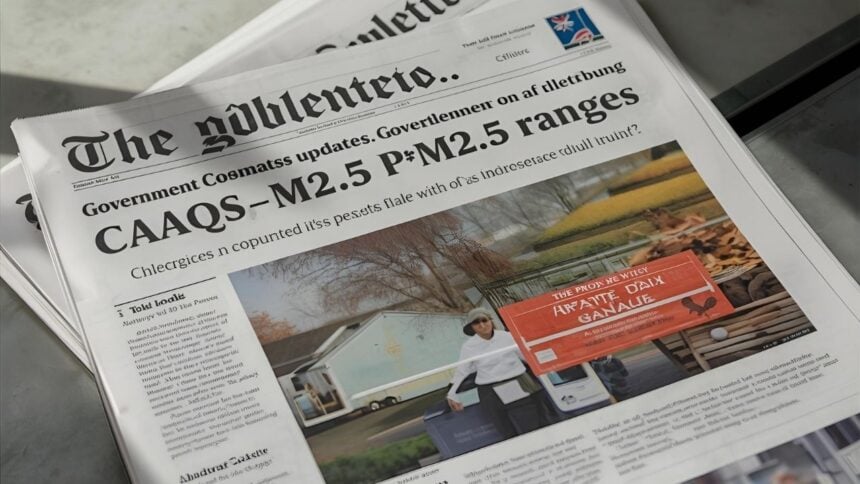Canada has corrected the ranges used to manage fine particulate pollution under the Canadian Ambient Air Quality Standards, issuing an erratum in the Canada Gazette that revises the PM2.5 bands for 2020 and 2030.
The notice amends a table first published on August 9 and says the earlier version contained errors.
The corrected table sets the “red” management level, which signals the need for reductions to bring concentrations below the standard, at more than 27 micrograms per cubic meter for the 24-hour metric in 2020 and more than 23 µg/m³ for 2030.
For the annual metric, the red level is more than 8.8 µg/m³ in 2020 and more than 8.0 µg/m³ in 2030.
The “orange” range, intended to avoid exceeding the standard, is 20 to 27 µg/m³ for the daily metric in 2020 and 17 to 23 µg/m³ in 2030, and 6.5 to 8.8 µg/m³ annually in 2020 and 6.1 to 8.0 µg/m³ in 2030.
“Yellow,” which focuses on preventing deterioration, spans 11 to 19 µg/m³ daily in 2020 and 11 to 16 µg/m³ in 2030, and 4.1 to 6.4 µg/m³ annually in 2020 and 4.1 to 6.0 µg/m³ in 2030.
“Green,” used to keep clean areas clean, is 10 µg/m³ or less for the daily metric and 4 µg/m³ or less for the annual metric.
The Gazette notice also clarifies two footnotes, it states that the concentration ranges use the same statistical form as the corresponding standards, and that management levels take effect at the same time as their respective CAAQS.
The federal website version has already been updated to reflect the corrections.
The adjustments do not change the existence of the standards themselves, but they sharpen the management ranges that provinces, territories, and air zones use to plan how they will meet or maintain the benchmarks.
Those ranges help determine the intensity of local and regional actions, from targeted emissions controls to measures that prevent backsliding in communities that already meet the standards.
Clarifying the 2030 markers signals a firmer trajectory for jurisdictions that must account for wildfire smoke episodes, industrial sources, transportation, and residential heating in their air-quality strategies.
Sectors with significant particulate contributions, such as oil and gas operations, power generation, mining, cement, and heavy transport, will weigh whether today’s controls are sufficient under the tighter 2030 bands.
Municipal utilities and developers may also need to show how infrastructure or land-use plans fit within local air-zone targets as authorities translate the ranges into management actions.
In regions where winter inversions or wildfire seasons push 24-hour concentrations higher, authorities may lean more on mitigation tools and contingency plans.
Where annual averages hover near the orange bands, expect closer scrutiny of emissions inventories, especially for combustion and dust-generating activities.
Canadian issuers that publish sustainability reports could start referencing the clarified bands when describing air-quality risk, given the link between PM2.5 exposure and health outcomes that drive public policy.
Air-quality planning depends on unambiguous ranges that translate national standards into clear signals for local action.
With the corrected table now on the record, policymakers and markets have a common baseline for the next stage of clean-air planning heading into 2030.




















